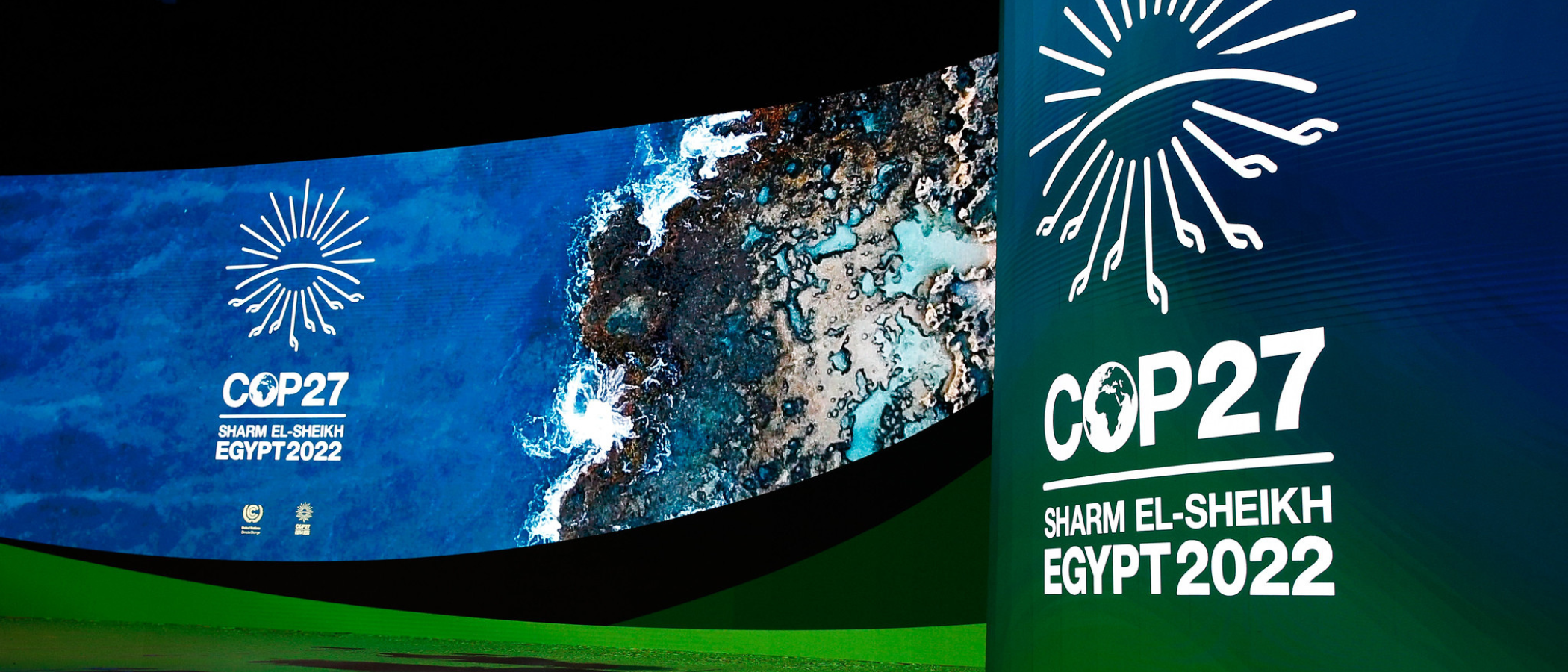

COP27 half-time report
13 November 2022
It is extremely difficult to assess what progress, if any, has been made at COP during the first week.
Important people have come and gone, giving their speeches and rapidly disappearing, leaving their delegation to get on with the hard work. The UN Secretary General won the battle for the best sound bite:
“We are on a highway to climate hell with our foot on the accelerator.”
Most of the nitty gritty negotiations take place in negotiation rooms. At the end of the first week, negotiators working on finance and other issues that fall under things like the Kyoto Protocol and Paris Agreement just plough on, knowing they have another week to reach an agreement.
But for others whose issues come under the two subsidiary bodies, the Subsidiary Body on Science and Technological Advice (SBSTA) and the Subsidiary Body on Implementation (SBI) text should have been agreed upon and forwarded to their Closing Plenary meetings. In some cases, this happened, such as items related to reporting and review under the Convention and the Paris Agreement. But in most cases, the text has yet to be agreed. Sometimes it is just a case of trying to find the right words on issues that are very complex, but more often, there are genuine and fundamental disagreements to overcome. For example, a draft on energy and transport emissions circulated early on Saturday had more than 200 square brackets; a square bracket is used to denote a piece of text that has not been agreed. Hence the schedule of meetings has been constantly rearranged and expanded with several late-night consultations. For example, the informal consultations on national adaptation plans were scheduled to finish at 11:00 pm, and I think it is a safe bet to assume they overran.
Observer status
As an observer, RMetS can attend most of these negotiations but can only observe. So, if you think a point should be made, you wait until the end and join all the other lobbyists trying to get the attention of a delegate whom you think might be receptive to the point you want to make. At the Subsidiary Body Plenaries, the list of issues that could not be agreed grew longer and longer. Most of these items adopted procedures for the way forward, with some forwarding heavily bracketed draft decision text for continued discussion by Parties during the second week. The Presidency is also expected to suggest a way forward for these issues.
Pavilions
But most of my time has not been spent in the negotiations. In addition to the negotiation rooms, there are other meeting rooms and pavilions across several zones, the Blue Zone, the Green Zone and the Innovation zone. Pavilions are a space bought by a government, NGO, international organisation, university, business etc. Some are small, not much more than a stand to display material, but many are large with their own meeting rooms. For example, the meeting room in the UK pavilion can hold up to about 50 people. So far, I have counted 94 pavilions with meeting rooms, and the owners of these pavilions all put on a series of talks and panel discussions throughout the day. As you can’t be in 94 places at once, it is mind-boggling to go through the daily program to figure out which talk in which pavilion in which Zone you are most likely to meet people who might be useful contacts for RMetS. Then you have to get there, it can take 10 minutes just to walk from one end of a Zone to the other and even longer between Zones, and then you have to find the right pavilion.
So, I have been having meetings with interesting people, such as the CEO of the British Society of Soil Science, and I chaired a panel discussion set up by the Met Office on Co-benefits and Trade-offs of Climate Action: Uncovering New Incentives for Climate Action. Also, as they are partly paying for my attendance here, I attended a Saudi Green Initiative Forum learning how Saudi Arabia plans to plant 10 billion trees by 2030, yes 10 billion.
So, what have been the significant issues?
The biggest issue is, of course, money. Rich countries have fallen short of a pledge to mobilise $US100 billion a year by 2020 in climate financing for poorer nations. This has led to distrust that negotiators are hoping to repair with fresh pledges. In my previous blog post, I mentioned that it was questionable whether the issue of loss and damage would get onto the formal agenda. Although loss and damage did get onto the agenda, there will not be a final agreement at this meeting. The best that can be hoped for is to set out a framework and parameters for how loss and damage funding could be achieved, with a deadline on when it should be in operation. But as one delegate told me, “at least the loss and damage genie is out of the bottle, and there is no way to put it back in again”.
To finish on a lighter note, early in the conference, delegates got a very small taste of deprivation, with food and water in short supply. Forewarned, I stuffed myself at breakfast to get me through to dinner.
I only have two more days at COP with more meetings already booked and running shoes at the ready to help me get between pavilions in record time.
About the Author
Dave Griggs, FRMetS is Vice-President at the Royal Meteorological Society





